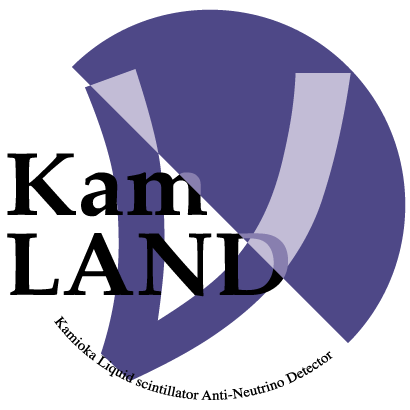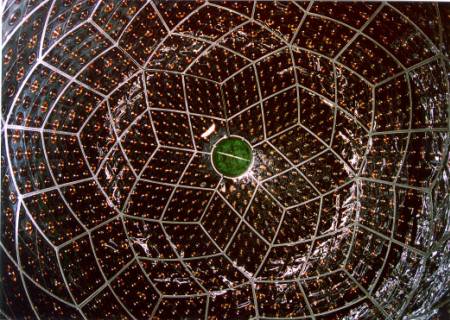The Kamioka Liquid-scintillator Anti-Neutrino Detector (KamLAND)Stanford University Website |

|
|
|
|
First Investigation of Geoneutrinos!
Click Here for Our Geoneutrino Link
.Click Here for New Oscillation Results
|
Do neutrinos have mass? Do these subatomic particles oscillate back and forth from one "flavor" to another? What can they tell us about the workings of the sun, the composition of the Earth, the process of star collapse, and the origin and the future of the cosmos? These are just a few of the questions being explored by researchers in the experiment known as KamLAND, the Kamioka L iquid-scintillator Anti-Neutrino Detector. The Standar Model of particle physics postulates that neutrinos are massless, that they have no weight. Over the past few decades, experiments detecting neutrinos created in the center of the sun or in the upper atmosphere of the earth have gathered extensive evidence that the Standard Model may not be correct. KamLAND stands to be the first experiment to find indisputable evidence for neutrino mass using a terrestrial source of anti-neutrinos -- Japanese nuclear reactors. Located on the island of Honshu in Japan, KamLAND detects hundreds of anti-neutrinos per year from nuclear reactors hundreds of kilometers away, an enormous improvement over previous attempts from any other detector. The KamLAND collaboration is made up of researchers from Japan, China, France and institutions throughout the US (please see the Links page to visit KamLAND sites hosted at other institutions). The detector is situated in the same cavern used by the original Kamiokande experiment, where 2002 Nobel laureate Masatoshi Koshiba performed much of his ground-breaking research in neutrino physics. This cavern is located down the hall from the continuation of the Kamiokande experiment, Super-Kamiokande , which over the past decade has played a major role in solar and atmospheric neutrino physics. KamLAND began taking data at the end of January, 2002. KamLAND has since observed anti-neutrino deficit as well as energy spectral distortion confirming neutrino oscillations. The existance of neutrino oscillations means that neutrinos have mass. KamLAND has also conducted a geoneutrino investigation. The KamLAND estimation of the radiogenic heat produced inside the Earth agrees with the current Earth models. In the links below you will find a general description of the KamLAND experiment and neutrino physics accessible to a general audience, as well as a more technical introduction to the experiment. A neutrino timeline offers an introduction to the history of the neutrino. There is also a page of KamLAND pictures and a list of talks and publications. And please feel free to ask us questions about KamLAND. |
|
General Description A non-technical description of the KamLAND experiment |
Technical Introduction |
A Neutrino Timeline |
|
Talks and Publications |
KamLAND Pictures |
Links |
|
Articles on KamLAND |
Geoneutrinos |
Gratta Group Homepage
This page not maintained. For information, contact Giorgio Gratta .
